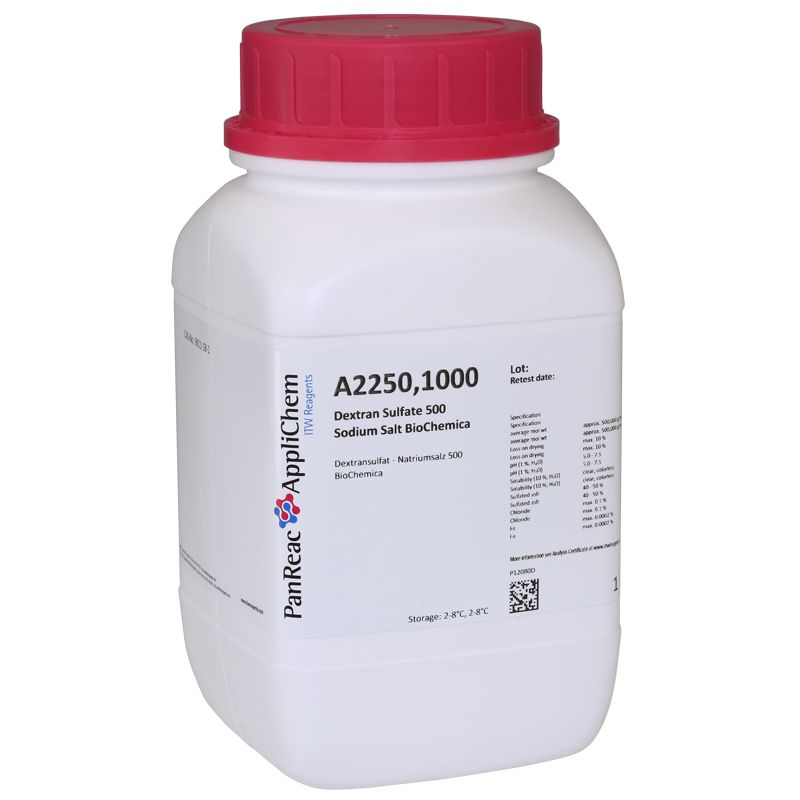Packs sizes (1)
| code | packaging size | price per unit | box price per unit | |
|---|---|---|---|---|
| Code & packaging | Price per piece | |||

|
code
A2250,1000
|
packaging size
1 kg
|
price per unit
single
3902,10€
|
box price per unit
|
Technical data
- Physical Description:
- Solid
- Product Code:
- A2250
- Product Name:
- Dextran Sulfate 500 Sodium Salt BioChemica
- Specifications:
- Average M: approx. 500,000 g/mol
Solubility (10 %; H2O): clear, colorless to yellow
pH (1 %; H2O): 5.0 - 7.5
Sulfated ash: 40 - 50 %
Loss on drying: max. 10 %
Chloride: max. 0.1 %
Fe: max. 0.0002 %
- WGK:
- 1
- Storage:
- 2 - 8°C
- CS:
- 39139000





